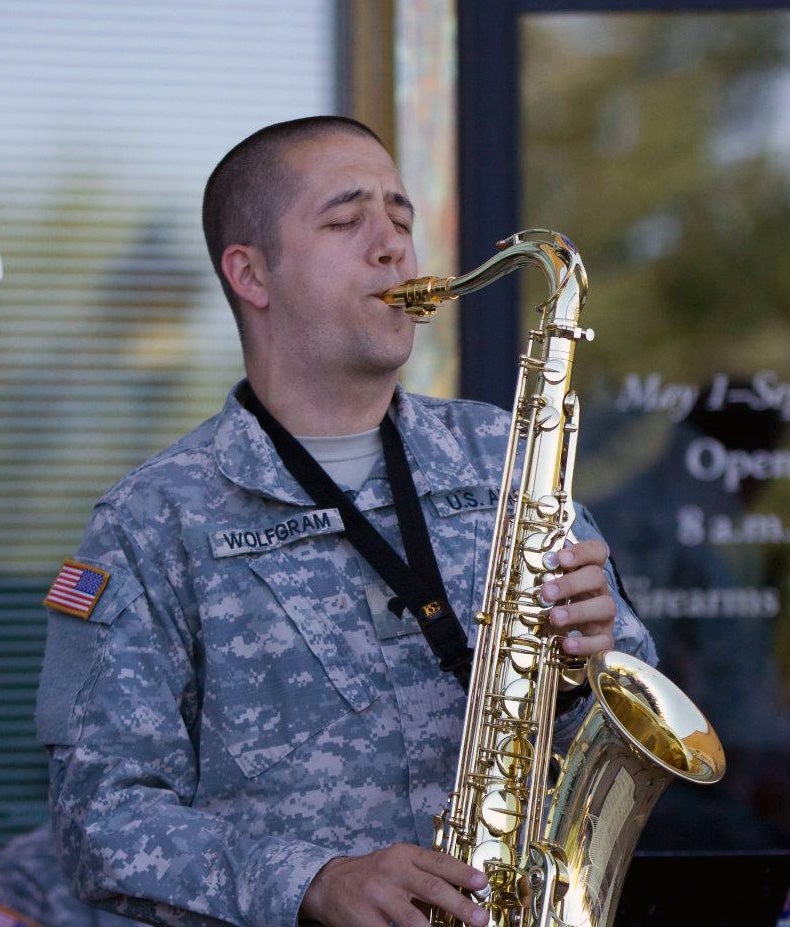
T. J. Wolfgram, a University of Michigan graduate, who is now the band director at University Liggett School in Grosse Pointe Woods, Michigan, as well as a member of the 338th U.S. Army Reserve Band, has created a new arrangement of “The Star-Spangled Banner” for the Star Spangled Music Edition. While musicians early in their training have a limited range making the realization of the melody difficult for beginning musicians, Wolfgram has confronted this challenge by distributing the pitches throughout the ensemble.
He notes:
“This edition has been crafted to allow students to successfully engage with the U.S. national anthem at an early stage of their band experience. As such, it has been designed with as limited a range as possible, with all wind instruments utilizing their most comfortable range of no more than a seventh or octave. Furthermore, this edition has been designed for utmost flexibility with the small beginning band in mind. It has only five independent parts: flute, clarinet, alto sax, trumpet, and trombone. Optional parts extend the instrumentation to include other possible beginning band instruments: oboe, bass clarinet, tenor sax,* bari sax, French horn, baritone (T.C. and B.C.), and Tuba. I have opted to match scoring in the brass between instrument groups, and while that choice results in such possible concerns as a 4th-line D for the French horns and low A for the tubas, I feel that the mirroring of registers with more plentiful instruments (trumpet and trombone, respectively), will result in a more confident and secure performance. Similarly, a variety of percussion parts have een crafted to allow for flexible scoring based on the resources and instrumentation in your ensemble. For ease of score reading, unison parts have not all been included in the score, but all are available in the download.
Click here to download the score to this new arrangement; here for the parts.
* Note: I have included two versions of the tenor sax part. The first follows the paradigm of reducing range to no more than an octave while maintaining the same concert pitches as the trombone part. That said, most beginning method books start the tenor saxophone in its middle to upper register, many beginning players have great difficulty getting their upper G to respond. Thus, I have also included an alternate tenor saxophone part that eases the transition into the elusive G while still matching the pitches of the trombones. This alternate part utilizes notes within the range of a tenth.

